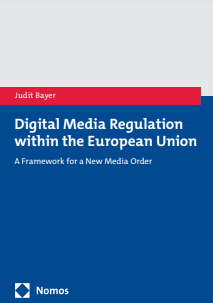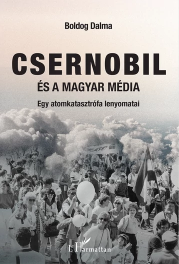Contents – Winter 2020
Szénási, Zoltán:
Szénási, Zoltán:
Changes in Új Nemzedék’s Ady-image between 1919 and 1929
In 1919, Új Nemzedék, a political daily founded in 1913, was re-launched as an outlet for the radical right. It evinced a strongly anti-Semitic rhetorical stance after the fall of the Hungarian Republic of Councils, which also dominated the discussion of actual cultural events. It made an effort to create a Christian-national literary canon in the post-1919 years in an attempt to integrate not only the representatives of national conservatism into the canon, but also the “Christian” authors of Nyugat (Ady, Babits, and Móricz). After 1922, a change in the editorial board brought about a change in the opinion on Ady. His poetical significance was not at all doubted later, yet the political and moral objections which characterised the nationalist conservative literary perspective of the period resurfaced. In addition to describing the changing Ady-image of Új Nemzedék, this paper aims to explore how the process related politically to the history of journalism and criticism.
Keywords: anti-semitism, conservativism, cult of Ady, Új Nemzedék, political Catholicism, radical right
Changes in Új Nemzedék’s Ady-image between 1919 and 1929
Médiakutató Winter 2020 pp. 7-18
Tamás, Ágnes:
Tamás, Ágnes:
“I am no friend of financial aids granted to the print press.”
This paper offers an analysis of the methods of press funding in the first few years following the Austro-Hungarian Compromise. It asks the question of whether the press politics of the era evinced continuity or discontinuity if compared to the previous period. It describes the different methods of press funding, including subscriptions, the dissemination of free copies, the newspaper stamp loan, the postal delivery cost exemption, deposit takeover, and subsidies. Its findings suggest that the Andrássy administration both inherited and modified the former system of press funding: it granted more funding to rural Hungarian and non-Hungarian newspapers, yet it followed their predecessors in that it subsidised some semi-official newspapers published in Budapest.
Keywords: Austro-Hungarian Compromise, comparative analysis, methods of press funding, press politics, semi-official press organs, subvention
“I am no friend of financial aids granted to the print press.”
Médiakutató Winter 2020 pp. 19-33
Szlama, Gabriella Zsófia:
Szlama, Gabriella Zsófia:
The representation of women wearing trousers in satirical periodicals between 1896−1914
In the 19th century, caricatures, illustrations, anecdotes, reports and poems in satirical journals became extremely popular. The publicists of widely-read journals, such as Borsszem Jankó, Kakas Márton and Bolond Istók had a marked opinion on topics related to politics and public life. Contemporary fashion was also subject to the authors’ witty comments, as they caricatured numerous aspects of women’s trousers such as the expenses of women’s dressing and the style of the new collections. This paper examines the different ways the above-mentioned periodicals caricatured women who wore trousers. It highlights the various formats of jokes and activities related to women’s trousers (e.g., sports and theatrical costume). The research covers the period 1896–1914 and the corpus consists of 65 articles.
Keywords: clothes, dressing, fashion, satirical journals, trousers
The representation of women wearing trousers in satirical periodicals between 1896−1914
Médiakutató Winter 2020 pp. 35-54
Egres, Dorottya:
Egres, Dorottya:
Strategic maneuvering in the polylogue of nuclear energy
The four reactors of the Paks nuclear power plant need to be shut down in the next decade. In order to maintain the approximately 40 per cent ratio of nuclear energy in the national energy production, Parliament gave its provisional acceptance to the expansion in 2009. The future energy policy of Hungary and the expansion financed and contracted by Russia has been on the political and media agendas ever since. This paper proposes an approach to the extended theory of pragma-dialectics, strategic maneuvering, that is suitable for the analysis of an extended polylogue. It is aimed at showing that the three aspects of strategic maneuvering (audience demand, topical potential, and presentational devices) can also be analysed in extended and spatially not localised argumentative situations with multiple players. For the examination of the three aspects, it studies the public opinion polls about the expansion from 2009 to 2017, and analyses the official online discourse about Paks 2 of selected political, environmentalist and expert actors in the same time period.
Keywords: argumentation, discourse analysis, nuclear energy, political communication, political deliberation, polylogue, pragma-dialectics, public opinion poll, strategic maneuvering
Strategic maneuvering in the polylogue of nuclear energy
Médiakutató Winter 2020 pp. 55-68
Guld, Ádám:
Guld, Ádám:
“I think that I’m the Jolly Joker, because if there’s no topic, you can still rely on me.”
Over the past 15 years, Kelemen Anna has become a fixed star in the Hungarian celebrity world. Some admire her, but the majority of the public enjoys forming harsh opinions about her activities. This high level of visibility could only be achieved by a comprehensive media presence that includes the press, television, radio, books, and online media. This visibility also demonstrates that the public’s interest in the celebrity has been constant for many years. The phenomenon also raises a number of exciting questions: What characterizes today’s celebrities, and why do we find the concepts of celebrity society and celebrity culture increasingly relevant? Who are celebrities, and what role do they play in the age of late modern, mediatised publicity? What may be behind this increased interest in celebrities, and what strategies do the most successful celebrities use to maintain public interest? This study seeks answers to these questions through an examination of the Kelemen Anna phenomenon.
Keywords: celebrity culture, celebrity society, hybrid celebrities, star studies
“I think that I’m the Jolly Joker, because if there’s no topic, you can still rely on me.”
Médiakutató Winter 2020 pp. 71-83
O. Réti, Zsófia:
O. Réti, Zsófia:
Popular music and film studies in the mirror of four newly published volumes of collected studies
This paper seeks to review four interrelated scholarly collections that focus on Eastern European popular music. Although research in this broader area is not new, its scholarly network, its entry into the international scene and its connections with other disciplines in the humanities and social sciences have only emerged in the last few years, to a great extent owing to the work of Ewa Mazierska and Zsolt Győri, the editors whose collections are reviewed here. Two of the four collections explore the movements of popular music, including a special issue of the journal Popular Music History about popular music transcending national borders (2016), and the volume Eastern European Music in a Transnational Context (2019). The other two investigate the relationship between popular music and film, including Popular Music and the Moving Image in Eastern Europe (2018), and a special issue of the journal Studies in Eastern European Cinema about cinema and pop music in Eastern Europe (2019), this latter one edited by Zsolt Győri alone.
Keywords: Eastern Europe, film, inter-mediality, popular music, post-Communism, trans-nationalism
Popular music and film studies in the mirror of four newly published volumes of collected studies
Médiakutató Winter 2020 pp. 87-95




